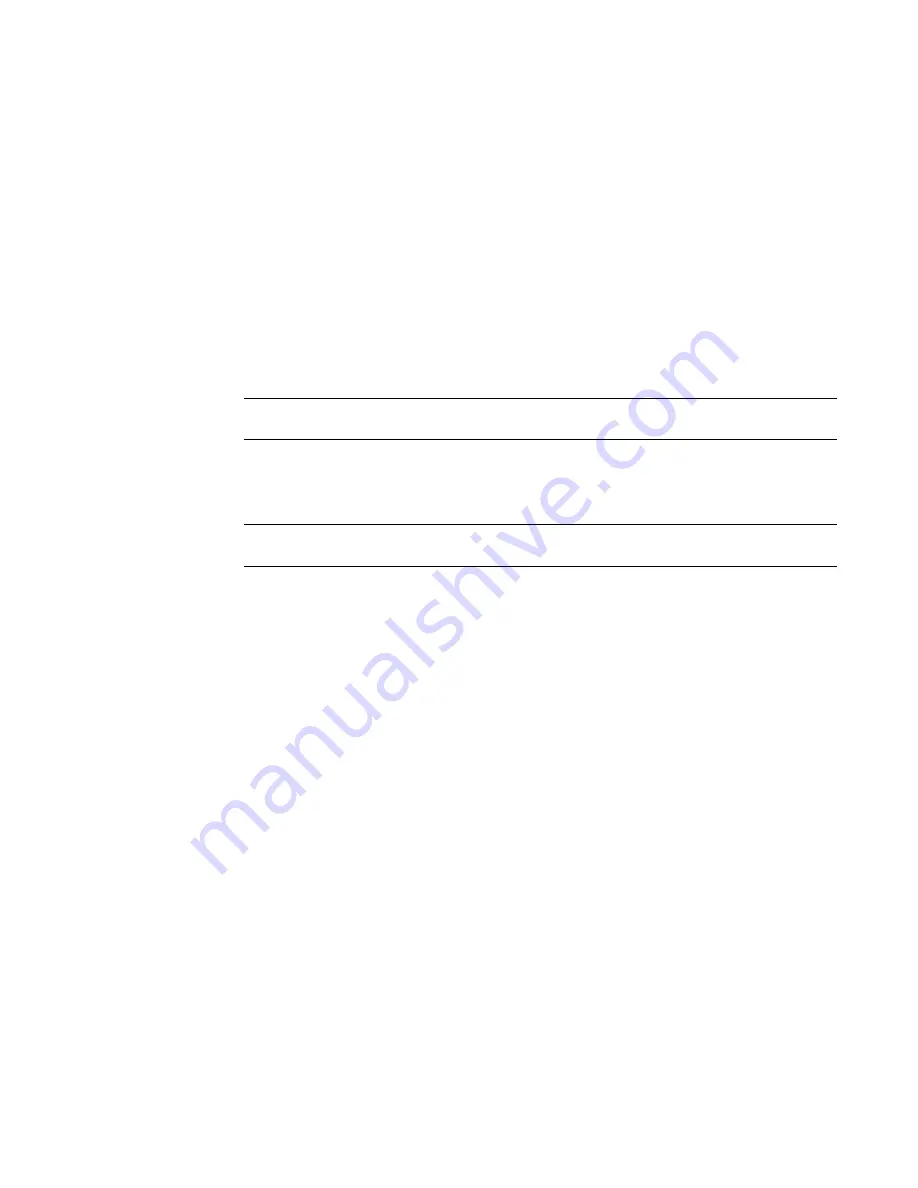
5
To describe a property line as an arc, do the following:
■
For Distance and Bearing, enter values that describe a line segment between 2 points on the
arc.
■
For Type, select Arc.
■
For Radius, enter a value.
The radius value must be greater than half the length of the line segment. The larger the
radius, the larger the circle becomes, resulting in a flatter arc.
■
For L/R, select L if the arc appears to the left of the line segment. Select R if the arc appears
to the right of the line segment.
6
Insert additional lines as needed.
7
Click Up and Down to modify the order of the property lines.
8
If the From Last to First Point value is not Closed, you can insert a new line or click Add Line
to Close.
9
Click OK.
NOTE
If you sketch an open loop and click OK, Revit Architecture issues a warning that it will not
calculate the area. You can ignore the warning to continue.
10
In the drawing area, move the property lines to their exact placement and click to place.
11
If the property line boundary does not have the desired look, select the boundary and click Edit
Table from the Options Bar.
NOTE
You can snap the property line to a benchmark using the Move command. See
Moving
Elements with the Move Tool
on page 302.
Reporting Cut and Fill Volumes on a Site
Revit Architecture can report cut and fill volumes on a site to aid in determining the costs of landscape
modification during site development.
Revit Architecture reports the values by making a comparison between a surface from one phase and, from
a later phase, another surface whose boundary lies within the earlier surface. For example, Revit Architecture
can compare a toposurface created in Phase 1 and a toposurface created in Phase 2 that lies within the
boundary of the surface from Phase 1. (See
Project Phasing
on page 1263.)
When you select the later surface and click Properties, you see the following instance properties:
■
The Cut value is the volume removed (where the later surface is lower than the earlier surface).
■
The Fill value is the volume added (where the later surface is higher than the earlier surface).
■
Net Cut/Fill value comes from subtracting the cut value from the fill value.
Viewing the Cut/Fill Volumes
This procedure is a general method of reporting cut/fill values. There are other ways to report values, including
sketching a new surface within an existing surface.
1
Create a toposurface in a site plan view. See
Toposurfaces
on page 893.
2
Select the finished toposurface.
Reporting Cut and Fill Volumes on a Site | 901
Summary of Contents for 24000-000000-9860 - Revit Architecture - PC
Page 1: ...Revit Architecture 2009 User s Guide April 2008 240A1 050000 PM02A ...
Page 4: ......
Page 56: ...18 ...
Page 116: ...78 Chapter 3 Revit Essentials ...
Page 172: ...134 Chapter 4 ProjectViews ...
Page 178: ...Schedule with Grid Lines Schedule with Grid Lines and an Outline 140 Chapter 4 ProjectViews ...
Page 554: ...516 ...
Page 739: ...Curtain wall Curtain Grid Curtain Walls Curtain Grids and Mullions 701 ...
Page 1004: ...966 ...
Page 1136: ...1098 ...
Page 1226: ...1188 ...
Page 1250: ...1212 ...
Page 1276: ...1238 Chapter 20 Design Options ...
Page 1310: ...1272 ...
Page 1366: ...1328 ...
Page 1406: ...1368 ...






























